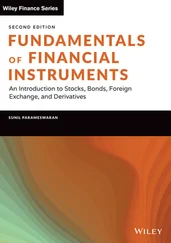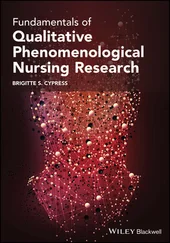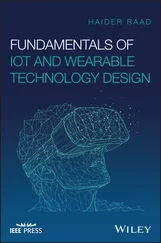10. Clavero C, Plasmon-induced hot-electron generation at nanoparticle-metal-oxide interfaces for photovoltaic and photocatalytic devices. Nature Photonics , 8: 95–103, 2014.
11. Fujishima A, Honda K. Electrochemical photolysis of water at a semiconductor electrode. Nature, 238: 37–38, 1972.
12. Grätzel M, Photoelectrochemical cells. Nature , 414: 338–344, 2001.
13. Daniel Paz-Soldan et al ., Jointly Tuned Plasmonic–Excitonic Photovoltaics Using Nanoshells. Nano Lett. 13, 4, 1502–1508, 2013.
14. Ye, W., Ran, L., Hao, H., Yujie, X., Plasmonic nanostructures in solar energy conversion. J. Mater. Chem. C., 5, 1008, 2017.
15. Wei E. I. Sha, Hugh L. Zhu, Luzhou Chen, Weng Cho Chew and Wallace C. H. Choy, A General Design Rule to Manipulate Photocarrier Transport Path in Solar Cells and Its Realization by the Plasmonic-Electrical Effect. Scientific Reports , 5, 8525, 2015.
16. Yoon Hee Jang, Yu Jin Jang, Seokhyoung Kim, Li Na Quan, Kyungwha Chung, and Dong Ha Kim, Plasmonic Solar Cells: From Rational Design to Mechanism Overview. Chem. Rev. , 116, 14982−15034, 2016.
17. K. L. Chopra, P. D. Paulson, V. Dutta, Thin film solar cells: an overview. Progress in thin film solar cells , 12:2–3, pp. 69–92, 2004.
18. Reineck P, Lee GP, Brick D, Karg M, Mulvaney P, Bach U, A solid-state plasmonic solar cell via metal nanoparticle self-assembly. Adv Mater, 24:4729, 4750–4755, 4729, 2012.
19. Ingram DB, Linic S, Water splitting on composite plasmonic-metal/ semiconductor photoelectrodes: evidence for selective plasmon-induced formation of charge carriers near the semiconductor surface. J Am Chem Soc. 133: 5202–5205, 2011.
20. Du L. Ultrafast plasmon induced electron injection mechanism in gold-TiO 2nanoparticle system. Journal of Photochemistry and Photobiology C: Photochemistry Reviews , 15: 21–30, 2013.
21. Kale MJ, Avanesian T, Christopher P, Direct Photocatalysis by Plasmonic Nanostructures. ACS Catalysis , 4: 116–128, 2014.
22. Gustav Mie, Beiträge zur Optik trüber Medien, speziell kolloidaler Metallösungen, Annalen der Physik , 330:3, pp. 377–445, 1908.
23. M. A. Green and S. Pillai, Harnessing Plasmonics For Solar Cells. Nature Photon. 6, 130, 2012.
24. Tian Y, Tatsuma T, Mechanisms, and applications of plasmon-induced charge separation at TiO2 films loaded with gold nanoparticles. J Am Chem Soc. , 127: 7632–7637, 2005.
25. Syed Mubeen, Joun Lee, Woo-ram Lee, Nirala Singh, Galen D. Stucky, and Martin Moskovits, On the Plasmonic Photovoltaic. ACS Nano , 8, 6, 6066–6073, 2014.
26. Liang, Z., Sun, J., Jiang, Y., Jiang, L., and Chen, X, Plasmonic Enhanced Optoelectronic Devices. Plasmonics, 9, 859–866, 2014.
27. Atwater HA, Polman A, Plasmonics for improved photovoltaic devices. Nat Mater., 9: 205–213, 2010.
28. Stafford, S., Garnier, C., and Gun’Ko, Y. K., Polyelectrolyte-stabilised magnetic-plasmonic nanocomposites. Nanomaterials , 8 (12), 1044, 2018.
29. Pastoriza-Santos, I., Kinnear, C., Pérez-Juste, J., Mulvaney, P., & Liz-Marzán, L. M., Plasmonic polymer nanocomposites. Nature Reviews Materials, 3, 375–391, 2018.
30. Catchpole, K. R., Mokkapati, S., Beck, F., Wang, E. C., McKinley, A., Basch, A., & Lee, J., Plasmonics and nanophotonics for photovoltaics. MRS Bulletin. Materials Research Society , 2011.
31. Dunbar, R. B., Pfadler, T., & Schmidt-Mende, L., Highly absorbing solar cells—a survey of plasmonic nanostructures. Optics Express , 20 (S2), A177, 2012.
32. Jiang, R., Li, B., Fang, C., and Wang, J., Metal/semiconductor hybrid nano-structures for plasmon-enhanced applications, Advanced Materials . Wiley-VCH Verlag, 2014.
33. Wu, N., Plasmonic metal-semiconductor photocatalysts and photoelectrochemical cells: A review. Nanoscale, 2018 .
34. Erwin, W. R., Zarick, H. F., Talbert, E. M., and Bardhan, R., Light trapping in mesoporous solar cells with plasmonic nanostructures. Energy and Environmental Science , 2016.
35. Spinelli, P., Ferry, E., Van De Groep, J., Van Lare, M., Verschuuren, A., Schropp, I., Polman, A., Plasmonic light trapping in thin-film Si solar cells. Journal of Optics, 2012.
36. Ueno, K., Oshikiri, T., Sun, Q., Shi, X., & Misawa, H., Solid-State Plasmonic Solar Cells. Chemical Reviews, 2018.
37. N. Papanikolaou, Optical Properties of Metallic Nanoparticle Arrays on a Thin Metallic Film. Phys. Rev. B ., 75, 235426, 2007.
38. Y. A. Akimov and W. S. Koh, Design of Plasmonic Nanoparticles For Efficient Subwavelength Light Trapping in Thin-Film Solar Cells. Plasmonics , 6, 155, 2011.
39. F. J. Beck, A. Polman and K. R. Catchpole, Tunable Light Trapping For Solar Cells Using Localized Surface Plasmons. J. Appl. Phys. 105, 114310, 2009.
40. Lin Y., Semiconductor nanostructure-based photoelectrochemical water splitting: A brief review. Chemical Physics Letters , 507: 209–215, 2011.
41. Bhattacharya, J., Chakravarty, N., Pattnaik, S., Dennis Slafer, W., Biswas, R., & Dalal, V. L., A photonic-plasmonic structure for enhancing light absorption in thin film solar cells. Applied Physics Letters , 99 (13), 2011.
42. Xngange Rni, Jih Cengh, Soqing h Zangin, Xcheni Lin, Tgkea Roij, Lnu Ho, Jhuio Hun, Wllace C. H. Coy, High Efficiency Organic Solar Cells Achieved by the Simultaneous Plasmon-Optical and Plasmon-Electrical Effects from Plasmonic Asymmetric Modes of Gold Nanostars. Small , 2016.
43. Su Y-H, Surface plasmon resonance of layer-by-layer gold nanoparticles induced photoelectric current in environmentally-friendly plasmonsensitized solar cell. Light: Science & Applications , 1: e14, 2012.
44. V. E. Ferry et al. , Improved Red-Response in Thin Film a-Si:H Solar Cells With Nanostructured Plasmonic Back Reflectors. Appl. Phys. Lett. 95, 183503, 2009.
45. M. Kirkengen, J. Bergil and Y. M. Galperin, Direct Generation of Charge Carriers in c-Si Solar Cells Due to Embedded Nanoparticles. J. Appl. Phys. 102, 093713, 2007.
46. Yocefu Hattori, Mohamed Abdellah, Jie Meng, Kaibo Zheng, Jacinto Sá, Simultaneous Hot Electron and Hole Injection upon Excitation of Gold Surface Plasmon. J. Phys. Chem. Lett., 10:11, 3140–3146, 2019.
47. Amalraj Peter Amalathas, and Maan M Alkaisi, Nanostructures for Light Trapping in Thin Film Solar Cells. Micromachines, 10, 619, 2019.
48. A. P. Kulkarni et al. , Plasmon-Enhanced Charge Carrier Generation in Organic Photovoltaic Films Using Silver Nanoprisms. Nano Lett. 10, 1501, 2010.
49. Ragip A. Pala, Justin White, Edward Barnard, John Liu, and Mark L. Brongersma, Design of Plasmonic Thin-Film Solar Cells with Broadband Absorption Enhancements. Adv. Mater. , 21, 3504–3509, 2009.
50. Chong Tong, Juhyung Yun, Haomin Song, Qiaoqiang Gann, Wayne A. Anderson, Plasmonic-enhanced Si Schottky barrier solar cells. Solar Energy Materials & Solar Cells , 120, 591–595, 2014.
51. Nakayama K, Tanabe K, Atwater HA, Plasmonic nanoparticle enhanced light absorption in GaAs solar cells. Applied Physics Letters , 93: 121904, 2008.
52. S. Pillai and M. A. Green, Plasmonics For Photovoltaic Applications. Sol. Energy Mater. Sol. Cells, 94, 1481, 2010.
53. Yinan Zhang, Xi Chen, Zi Ouyang, Hongyan Lu, Baohua Jia, Zhengrong Shi, and Min Gu, Improved multicrystalline Si solar cells by light trapping from Al nanoparticle enhanced antireflection coating. Optical Materials Express , 3:4, 489–495, 2013.
54. Zengji Yue, Boyuan Cai, Lan Wang, Xiaolin Wang, Min Gu, Intrinsically core-shell plasmonic dielectric nanostructures with ultrahigh refractive index. Sci. Adv., 2:e1501536, 2016.
Читать дальше












